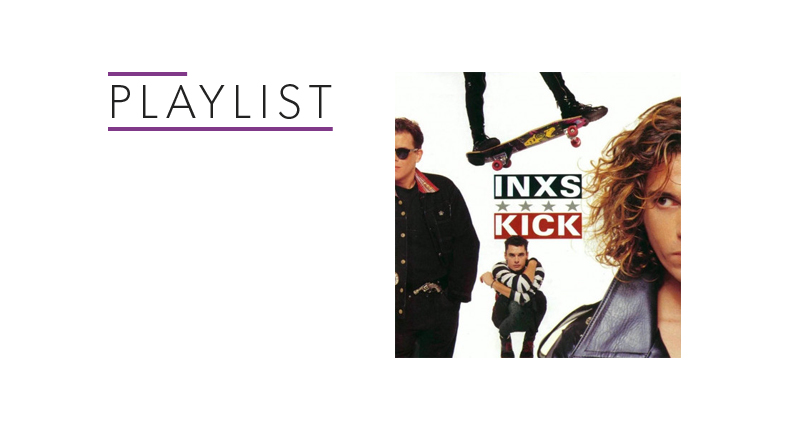We test the Dolby Atmos mix of INXS’s 'Kick'
How does an album mixed for Atmos sound on a home system? Different again, as we discover...

Taking seats in Abbey Road’s designated Atmos mixing room, we prepare to experience our second Atmos mix of what was originally a two-channel stereo recording in only a matter of days.
It turned out R.E.M.’s 25th anniversary edition of Automatic For The People, slated to be the first commercially available Atmos music release, was pipped to the shelves by a week. The usurper was this, the 30th anniversary remaster of INXS’s Kick.
We heard the former at Dolby Europe’s head office, and now this in the same room as it was originally mixed for multichannel playback by the experienced hand of Giles Martin. Both venues are fitted with dozens of speakers way beyond the budget of those seeking to buy the records - so it’s fair to say we are getting the best (if not entirely realistic) representation of what the medium has to offer.
MORE: Michael Stipe says R.E.M. in Atmos is "breath-taking" - and we agree
"Like doing an autopsy"
When we heard Automatic For The People we marvelled not only at how compelling the new presentation sounds, but also just how different.
Perhaps it's little surprise, then, that when we hear this INXS mix again, this time through our own 7.2.2 reference system, we get a third impression of the album. It's different to how we knew it in stereo, and different to its Abbey Road playback.
Yet still the essence of the record remains intact. We’ve found ‘better or worse’ a difficult parameter to use with these Atmos mixes – they are almost separate from the original – but this particular album’s character, and the way it has been interpreted by Martin, certainly plays into the hands of Atmos’s talents.
Get the What Hi-Fi? Newsletter
The latest hi-fi, home cinema and tech news, reviews, buying advice and deals, direct to your inbox.
There is little respite from tracks such as Guns In The Sky and near-legendary earworm Need You Tonight - they still hoof you in the chest like a mule - but particular musical strands (such as padded keys in the more reflective moments) have an ability to float across the room as they never could in stereo. But it's those cocksure riffs and melodies that benefit most from, effectively, wrapping themselves around the listener.
Martin has also given us a clue as to why Kick was so ripe for the Atmos treatment. “What INXS do as a band - which is really important, and is what’s on this album - is it’s very efficient. There’s not material there just for the sake of it - everything has its place and it makes it easy to mix because the songs are really well constructed and they’re considered.
“Doing these mixes, it’s a bit like doing an autopsy of a body - but in the case of a really good album you realise it’s in perfect working order, everything’s in place and you try to put it back together as best you can so it makes you feel this way.”
MORE: Dolby Atmos: what Is It? How Can You Get It?
Our position unchanged
In a system such as the one we’re using, with two upward-firing speakers to deliver what is essentially the third dimension of the sound, the compositions don’t hit as hard in the chest as they do when there are 30 drivers firing at us. Not a huge surprise.
But drying up Michael Hutchence’s vocal a little and placing it in the centre means the weight of his particular instrument is still felt with appropriate force. The rest of the mix arranges the band around us to offer the illusion of their physical presence quite successfully.
We were fully behind the idea of albums mixed for Dolby Atmos having heard them on eye-wateringly expensive systems. Having taken one home to try ourselves, we can happily state our position hasn’t changed.
Simon Lucas is a freelance technology journalist and consultant, with particular emphasis on the audio/video aspects of home entertainment. Before embracing the carefree life of the freelancer, he was editor of What Hi-Fi? – since then, he's written for titles such as GQ, Metro, The Guardian and Stuff, among many others.
